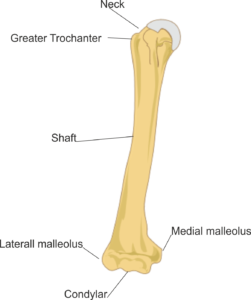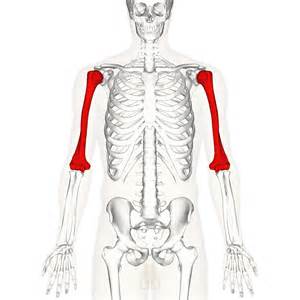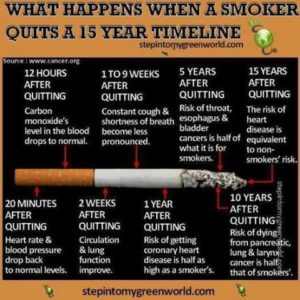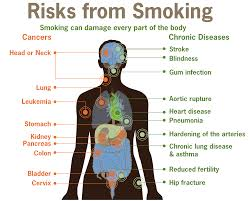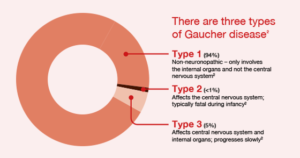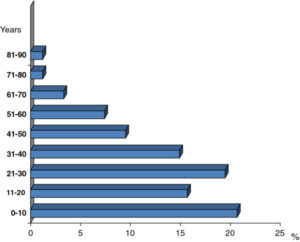Archive | September 2023
Why would anyone call this bone the funny bone; especially if it was fractured?
Updated the article on 4/25/22 by Elizabeth Lynch RN
In human anatomy, the ulnar nerve is a nerve that runs near the ulna bone. The ulnar collateral ligament of elbow joint is in relation with the ulnar nerve. The nerve is the largest unprotected nerve in the human body (meaning unprotected by muscle or bone), so injury is common. This nerve is directly connected to the little finger, and the adjacent half of the ring finger, innervating the palmar side of these fingers, including both front and back of the tips, perhaps as far back as the fingernail beds.
This nerve can cause an electric shock-like sensation by striking the medial epicondyle of the humerus from posteriorly, or inferiorly with the elbow flexed. The ulnar nerve is trapped between the bone and the overlying skin at this point. This is commonly referred to as bumping one’s “funny bone“. This name is thought to be a pun, based on the sound resemblance between the name of the bone of the upper arm, the “humerus” and the word “humorous”. Alternatively, according to the Oxford English Dictionary it may refer to “the peculiar sensation experienced when it is struck”.
A distal humerus fracture is a break in the lower end of the upper arm bone (humerus), one of the three bones that come together to form the elbow joint. A fracture in this area can be very painful and make elbow motion difficult or impossible.
Most distal humerus fractures are caused by some type of high-energy event—such as receiving a direct blow to the elbow during a car collision. In an older person who has weaker bones, however, even a minor fall may be enough to cause a fracture.
Your elbow is a joint made up of three bones:
- The humerus (upper arm bone)
- The radius (forearm bone on the thumb side)
- The ulna (forearm bone on the pinky side)
The elbow joint bends and straightens like a hinge. It is also important for rotation of the forearm; that is, the ability to turn your hand palm up (like accepting change from a cashier) or palm down (like typing or playing the piano).
A distal humerus fracture occurs when there is a break anywhere within the distal region (lower end) of the humerus. The bone can crack just slightly or break into many pieces (comminuted fracture). The broken pieces of bone may line up straight or may be far out of place (displaced fracture).
In some cases, the bone breaks in such a way that bone fragments stick out through the skin or a wound penetrates down to the bone. This is called an open fracture. Open fractures are particularly serious because, once the skin is broken, infection in both the wound and the bone is more likely to occur. Immediate treatment is required to prevent infection.
Distal humerus fractures are uncommon; they account for just about 2 percent of all adult fractures. They can occur on their own, with no other injuries, but can also be a part of a more complex elbow injury.
Causes:
Obviously falls, but different ways. Falls can be major or minor falls.
One is a direct fall on the elbow, the arm extended out and hits against something even when falling and trying to break the fall.
Also a direct blow to the area like from a MVA with the elbow hitting the dash board or even hit by a baseball bat or an item like it whether accidentally or done intentionally.
Falling on an outstretched arm with the elbow held tightly to brace against the fall. In this situation, the triceps muscle, which attaches to the olecranon, can pull a piece of the bone off of the ulna. Injuries to the ligaments around the elbow may occur with this type of injury, as well.
Fracture of the elbow is due to:
- Falling directly on the elbow
- Receiving a direct blow to the elbow from something hard, like a baseball bat, or a dashboard or car door during a vehicle collision.
- Falling on an outstretched arm with the elbow held tightly to brace against the fall. In this situation, the triceps muscle, which attaches to the olecranon, can pull a piece of the bone off of the ulna. Injuries to the ligaments around the elbow may occur with this type of injury, as well.
The signs and symptoms of a fracture usually include:
Signs and Symptoms for a any distal humerus fracture or any fracture may be very painful and can prevent you from moving your elbow or area fractured.
- Swelling due to blood running to the area. RX: This is the logic of putting ice to the area for 24-48 hrs intermittently to cause vasoconstriction of blood to the area to decrease the swelling; helping this would be raise the fracture limb above the heart causing blood by gravity back to the heart which furthers decrease the swelling.
- Intense pain and not able to move the elbow at all.
- Bruising caused by old blood in the area (think of just twisting your wrist or elbow or ankle and you know you see bruising well expect it with fractures).
- Tenderness to the touch due to the bone broken.
- Stiffness due to the swelling and injury being painful.
- A feeling of instability in the joint, as if your elbow is going to “pop out” due to simply the bone is broken. Just like a beam broken holding a part of a house up and due to the brake that area of the home starts falling.
Prognosis for most arm fractures is very good if treated early.
Complications may include:
- Uneven growth. Because a child’s arm bones are still growing, a fracture in a growth plate — the area where growth occurs near each end of a long bone — can interfere with that bone’s normal growth.
- Osteoarthritis. Fractures that extend into a joint can cause arthritis there years later.
- Stiffness. The immobilization required to heal a fracture in the upper arm bone can sometimes result in painfully limited range of motion of the elbow or shoulder.
- Bone infection. If any part of your broken bone protrudes through your skin, it may be exposed to germs that can cause infection. Prompt treatment of this type of fracture is critical.
- Nerve or blood vessel injury. If the upper arm bone (humerus) fractures into two or more pieces, the jagged ends may injure nearby nerves and blood vessels. Seek immediate medical attention if you notice any numbness or circulation problems.
- Compartment syndrome. Excessive swelling of the injured arm can cut off the blood supply to part of the arm, causing pain and numbness. Typically occurring 24 to 48 hours after the injury, compartment syndrome is a medical emergency that requires surgery. It can also be caused by a too-tight cast.
Treatment:
Treatment for fractures are simply splints to casts and in complex fractures and penetrating fractures (bone going through the skin) would be surgery.
Treatment for a distal humerus fracture usually involves surgery to restore the normal anatomy and motion of the elbow.
QUOTE FOR TUESDAY:
“”Smoking and use of any tobacco product including e-cigarettes, cigars, smokeless tobacco or other nicotine containing product cause or worsen numerous diseases and conditions. Smoking is the number one cause of preventable disease and death worldwide. Smoking-related illness in the U.S. costs more than $600 billion a year, including over $241 billion in direct medical care for adults and $184 billion in lost productivity.”
American Lung Association (https://www.lung.org/quit-smoking/smoking-facts/health-effects)
Part 2 Smoking? Why don’t you just drink poison. What is does to our body!
Know when the lungs get effected in time the heart gets effected. One Affects the other in time. The heart can’t live without the lungs and viCE versa.
Now knowing just this you’ll understand why smoking alone can cause the following conditions, Through the Centers for Disease Control and Prevention. They state the following:
Smoking and Increased Health Risks
Compared with nonsmokers, smoking is estimated to increase the risk of—
- Coronary heart disease by 2 to 4 times, (causing atherosclerosis=thickening of the vessels or due to arteriosclerosis=hardening of the arteries and remember smoking causes vasoconstriction of the vessels = increase pressure in the vessels = high B/P.
- Stroke by 2 to 4 times(Due to causingthe above problems listed under coronary heart disease.)
- Men developing lung cancer by 23 times,
- Women developing lung cancer by 13 times(cancers due to constant irritation of the tissues) , and
- Dying from chronic obstructive lung diseases (such as chronic bronchitis and emphysema) by 12 to 13 times.( Explained at the top)
Smoking and Cardiovascular Disease
- Smoking causes coronary heart disease, the leading cause of death in the United States.
- Cigarette smoking causes reduced circulation by narrowing the blood vessels (arteries) and puts smokers at risk of developing peripheral vascular disease (i.e., obstruction of the large arteries in the arms and legs that can cause a range of problems from pain to tissue loss or gangrene) This pain to gangrene to amputation is due to lack of oxygenated blood getting to the tissue caused by the vasoconstriction the cigarette smoking caused.
- Smoking causes abdominal aortic aneurysm (i.e., a swelling or weakening of the main artery of the body—the aorta—where it runs through the abdomen). An aneurysm with constant vasoconstriction (increases pressure) puts the aneurysm at risk for rupture because the aneurysm area isn’t as strong as the other vessels=Rupture of the aortic aneurysm
Smoking and Respiratory Disease
- Smoking causes lung cancer.
- Smoking causes lung diseases (e.g., emphysema, bronchitis, chronic airway obstruction) by damaging the airways and alveoli (i.e., small air sacs) of the lungs.
Smoking and Cancer
Smoking causes the following cancers: (in alphabetical order)
- Acute myeloid leukemia
- Bladder cancer
- Cancer of the cervix
- Cancer of the esophagus
- Kidney cancer
- Cancer of the larynx (voice box)
- Lung cancer
- Cancer of the oral cavity (mouth)
- Pancreatic cancer
- Cancer of the pharynx (throat)
- Stomach cancer
Smoking and Other Health Effects:
Smoking has many adverse reproductive and early childhood effects, including increased risk for—
- Infertility
- Preterm delivery
- Stillbirth
- Low birth weight
- Sudden infant death syndrome (SIDS).1,2,9Smoking is associated with the following adverse health effects:1
- Postmenopausal women who smoke have lower bone density than women who never smoked.
- Women who smoke have an increased risk for hip fracture than women who never smoked.
References
- U.S. Department of Health and Human Services. The Health Consequences of Smoking: A Report of the Surgeon General. Atlanta: U.S. Department of Health and Human Services, Centers for Disease Control and Prevention, National Center for Chronic Disease Prevention and Health Promotion, Office on Smoking and Health, 2004 [accessed 2013 June 28].
- U.S. Department of Health and Human Services. How Tobacco Smoke Causes Disease: What It Means to You. Atlanta: U.S. Department of Health and Human Services, Centers for Disease Control and Prevention, National Center for Chronic Disease Prevention and Health Promotion, Office on Smoking and Health, 2010 [accessed 2013 June 28].
- Centers for Disease Control and Prevention. Annual Smoking-Attributable Mortality, Years of Potential Life Lost, and Productivity Losses—United States, 2000–2004. Morbidity and Mortality Weekly Report 2008;57(45):1226–8 [accessed 2013 June 28].
- Centers for Disease Control and Prevention. QuickStats: Number of Deaths from 10 Leading Causes–National Vital Statistics System, United States, 2010. Morbidity and Mortality Weekly Report 2013:62(08);155. [accessed 2013 June 28].
- Mokdad AH, Marks JS, Stroup DF, Gerberding JL. Actual Causes of Death in the United States. JAMA: Journal of the American Medical Association 2004;291(10):1238–45 [cited 2013 June 28].
- U.S. Department of Health and Human Services. Reducing the Health Consequences of Smoking: 25 Years of Progress. A Report of the Surgeon General. Rockville (MD): U.S. Department of Health and Human Services, Public Health Service, Centers for Disease Control, National Center for Chronic Disease Prevention and Health Promotion, Office on Smoking and Health, 1989 [accessed 2013 June 28].
- Ockene IS, Miller NH. Cigarette Smoking, Cardiovascular Disease, and Stroke: A Statement for Healthcare Professionals from the American Heart Association. Circulation 1997;96(9):3243–7 [accessed 2013 June 28].
- Institute of Medicine. Secondhand Smoke Exposure and Cardiovascular Effects: Making Sense of the Evidence. [PDF–707 KB] Washington: National Academy of Sciences, Institute of Medicine, 2009 [accessed 2013 June 28].
- U.S. Department of Health and Human Services. Women and Smoking: A Report of the Surgeon General. Rockville (MD): U.S. Department of Health and Human Services, Public Health Service, Office of the Surgeon General, 2001 [accessed 2013 June 28].
GET IT NOw? Please say yes. Smoking rots for your body not just in the lungs but everywhere. How do you make a complete turn-around? Look at your health in regards to what your goal is out of life. Do you want to live longer and most importantly HEALTHIER? When healthier in mind and body you are able to do more with your life in activities of daily living and more than that, so QUIT. If you want to sit most of your life with continuing to smoke but if not you must stop smoking now unless you have a unusual discipline in your way of living that allows you to have a about 6 cigarettes to 1 pack a YEAR, not daily. It is recommended you stop completely but if it actually has to be a part of your life than do it in moderation or less. If you’re able to do that your definitely not addicted to the bad habit physically, if anything addicted to it mentally. That would still make your life healthier as to smoking frequently every day. Know you take the risk of increasing your quantity in time so I recommend Quit.
Various lifestyle factors have been associated with increasing the risk of stroke. These include lack of exercise, alcohol, diet, obesity, smoking, drug use, and stress. Guidelines endorsed by the Centers for Disease Control and Prevention and the National Institutes of Health recommend that Americans should exercise for at least 30 minutes of moderately intense physical activity on most, and preferably all, days of the week. Recent epidemiologic studies have shown a U-shaped curve for alcohol consumption and coronary heart disease mortality, with low-to-moderate alcohol consumption associated with lower overall mortality. High daily dietary intake of fat is associated with obesity and may act as an independent risk factor or may affect other stroke risk factors such as hypertension, diabetes, hyperlipidemia, and cardiac disease. Homocysteine is another important dietary component associated with stroke risk, while other dietary stroke risk factors are thought to be mediated through the daily intake of several vitamins and antioxidants. Smoking, especially current smoking, is a crucial and extremely modifiable independent determinant of stroke. Despite the obstacles to the modification of lifestyle factors, health professionals should be encouraged to continue to identify such factors and help improve our ability to prevent stroke, decrease cancers caused by smoking, decrease coronary artery disease, and obesity. Learn healthy habits or healthier habits, broaden your knowledge on the 4 food groups in what is lean or leaner or leanest with each group, increase your activity 30 minutes a day and learn what a healthy diet actually is through Dr. Wayne Scott Anderson’s book “Dr. A’s habits of health” and even if you need to lose weight we can show you the way to do it healthy. It’s not a diet for 3 months or even 6 to a year but it is learning how to get to your body mass index in the ideal weight range for your height and you decide how low you want to go. We can show you through the book and those having more difficulty can buy our foods for 6 months or even a year or in my case I started almost a year ago and I use both their healthy foods as well as healthy foods from the store. You decide the choices, no one else. If you are interested go to my website healthyusa.tsfl.com and peek at what we offer for no prescription, no charge, no donation and no hacking. If you like what you see join me and so many others trying to get America healthier and in time decrease our population in diseases or illnesses primarily impacted by health habits, diet, and weight. Wouldn’t you and the future want to get better in mind and body to impact our health care system that includes our insurance and most importantly lives of citizens in the USA in how they live (which would be more active). It is your choice and I hope you decide to come aboard to my website healthyusa.tsfl.com and I know if I could do it so can too. It just takes discipline and the drive to want to stay healthy or get in a better state of heath. Hope I have helped someone out there in broadening your knowledge regarding how to keep or reach a healthier life.
QUOTE FOR MONDAY:
“Smoking causes about 90% (or 9 out of 10) of all lung cancer deaths. More women die from lung cancer each year than from breast cancer. Smoking causes about 80% (or 8 out of 10) of all deaths from chronic obstructive pulmonary disease (COPD). Cigarette smoking increases risk for death from all causes in men and women.”
Center for Disease Control and Prevention CDC
Simple facts with consequences you face if you decide to start or continue smoking.
Through an accurate reference the Centers for Disease Control and Prevention, who wants to save lives and protect people, support the following:
Smoking is estimated to increase the risk—
-
- For coronary heart disease by 2 to 4 times1,6
- For stroke by 2 to 4 times1
- Of men developing lung cancer by 25 times1
- Of women developing lung cancer by 25.7 times1
Smoking causes diminished overall heath, such as self-reported poor health, increased absenteeism from work, and increased health care utilization and cost.
Smokers are at greater risk for diseases that affect the engine of the body=The heart and its branches=The circulatory system (putting a smoker at high risk for cardiovascular disease).
- Smoking causes stroke and coronary heart disease—the leading causes of death in the United States.
- Even people who smoke fewer than five cigarettes a day can have early signs of cardiovascular disease.
- Smoking damages blood vessels and can make them thicken and grow narrower. This makes your heart beat faster and your blood pressure go up. Clots can also form.
- A heart attack occurs when a clot blocks the blood flow to your heart. When this happens, your heart cannot get enough oxygen causing starvation of food, being oxygen to the heart tissue. This damages the heart muscle, and part of the heart muscle can die, which is what exactly happens with a heart attack where angina (lack of 02 is reversible).
- A stroke occurs when a clot blocks the blood flow to part of your brain or when a blood vessel in or around your brain bursts causing again starvation of food, being 02, just in a different tissue part. Get it oxygen is the food to all our tissues of the body
- Blockages caused by smoking can also reduce blood flow to your skin and legs (For example Peripheral Vascular Disease= PVD). Ever see the commercial with a person telling you to stop smoking with fingers surgically removed or limbs, PVD is what occurred to that individual and the person didn’t stop smoking. Due to this behavior what happened the vessels of the individual’s limbs became so narrowed that it cut off oxygenated blood supply to those tissue parts causing ischemia-lack of oxygen, which led to necrosis of the tissue (death) and the part had to be surgi-cally removed. Now that individual can’t walk or grasp things with those limbs that were operated on. Is smoking worth this consequence? I don’t think so, what about you? Just think about it if you still smoke.Smoking can cause lung disease by damaging your airways and the small air sacs (alveoli) found in your lungs. What actually happens to the lung tissue is the pin point openings (alveoli) keeps expanding to a wider opening. The alveoli is responsible of oxygen and carbon dioxide exchange when we inhale and exhale but with the alveoli stretched the exchange of the gases gets poor.
- Smoking effects the transmission of the body=The Lungs
- Lung diseases caused by smoking include COPD, which includes emphysema (especially) and chronic bronchitis.
- Cigarette smoking causes most cases of lung cancer.
- If you have asthma, tobacco smoke can trigger an attack or make an attack worse.1,2
- Smokers are 12 to 13 times more likely to die from COPD than nonsmokers.
Smoking can cause cancer in almost every area of the body. If nobody smoked, one of every three cancer deaths in the United States would not happen. Smoking increases risk of dying from cancer and other diseases in cancer patients and survivors.
For those who quit smoking what risks you reduce:
- Quitting smoking cuts cardiovascular risks. Just 1 year after quitting smoking, your risk for a heart attack drops sharply.2
- Within 2 to 5 years after quitting smoking, your risk for stroke could fall to about the same as a nonsmoker’s.2
- If you quit smoking, your risks for cancers of the mouth, throat, esophagus, and bladder drop by half within 5 years.2
- Ten years after you quit smoking, your risk for lung cancer drops by half.
Again, if you smoke you may want to consider stopping; give it a thought.
QUOTE FOR THE WEEKEND:
“Bones support your body and allow you to move. They protect your brain, heart, and other organs from injury.
Bone is a living, growing tissue. It is made mostly of two materials: collagen (KOL-uh-juhn), a protein that provides a soft framework, and calcium (KAL-see-uhm), a mineral that adds strength and hardness. This combination makes bone strong and flexible enough to hold up under stress.
Bone releases calcium and other minerals into the body when you need them for other uses.
Think of your bones as a “bank” where you “deposit” and “withdraw” bone tissue. During your childhood and teenage years, new bone is added (or deposited) to the skeleton faster than old bone is removed (or withdrawn). As a result, your bones become larger, heavier, and denser.”
National Institute of Arthritis and Musculosketetal and Skin Disease (https://www.niams.nih.gov/health-topics/kids/healthy-bones)
QUOTE FOR FRIDAY:
“Gaucher disease can affect anyone, occurring in up to 1 in 40,000 live births in the general population.
Gaucher disease is more common among Jewish people of Ashkenazi (Eastern European) descent, occurring in approximately 1 in 450 within this population. As many as 1 in 10 may carry the mutated gene responsible for Gaucher disease.
Gaucher (go-SHAY) disease is the result of a buildup of certain fatty substances in certain organs, particularly your spleen and liver. This causes these organs to enlarge and can affect their function. The fatty substances also can build up in bone tissue, weakening the bone and increasing the risk of fractures. If the bone marrow is affected, it can interfere with your blood’s ability to clot. An enzyme that breaks down these fatty substances doesn’t work properly in people with Gaucher disease. Treatment often includes enzyme replacement therapy.”
National Gaucher Foundation (https://www.mayoclinic.org/diseases-conditions/gauchers-disease/symptoms-causes/syc-20355546)
Gaucher (go-SHAY) disease
Gaucher (go-SHAY) disease is the result of a buildup of certain fatty substances in certain organs, particularly your spleen and liver. This causes these organs to enlarge and can affect their function.
The fatty substances also can build up in bone tissue, weakening the bone and increasing the risk of fractures. If the bone marrow is affected, it can interfere with your blood’s ability to clot.
An enzyme that breaks down these fatty substances doesn’t work properly in people with Gaucher disease. Treatment often includes enzyme replacement therapy.
An inherited disorder, Gaucher disease is most common in Jewish people of Eastern and Central European descent (Ashkenazi). Symptoms can appear at any age.
Types of Gaucher Disease:
Scientists divide Gaucher disease into 3 different types based on the presence or absence of early-onset brain involvement, including:
- Gaucher disease type 1: Gaucher disease type 1 is the most common form of the disease in western countries, making up roughly 95 percent of patients there. Symptoms include spleen and liver enlargement, bone problems, and fatigue. Brain development is normal.
- Gaucher disease type 2: This type of Gaucher disease is rare and involves severe neurological (brain stem) abnormalities. It is usually fatal within the first 2 years, and it is currently untreatable because of the severe, irreversible brain damage.
- Gaucher disease type 3: This type of Gaucher disease is rare in the United States and Europe; however, it is the most common form of the disease worldwide. Gaucher disease type 3 has a severity between types 1 and 2, causing the same symptoms as type 1 plus some neurological involvement. While patients typically have a shortened lifespan, some can live into their 50s with treatment.
Symptoms
There are different types of Gaucher disease, and signs and symptoms of disease vary widely, even within the same type. Type 1 is by far the most common.
Siblings, even identical twins, with the disease can have different levels of severity. Some people who have Gaucher disease have only mild or no symptoms.
Most people who have Gaucher disease have varying degrees of the following problems:
- Abdominal complaints. Because the liver and especially the spleen can enlarge dramatically, the abdomen can become painfully distended.
- Skeletal abnormalities. Gaucher disease can weaken bone, increasing the risk of painful fractures. It can also interfere with the blood supply to your bones, which can cause portions of the bone to die.
- Blood disorders. A decrease in healthy red blood cells (anemia) can result in severe fatigue. Gaucher disease also affects the cells responsible for clotting, which can cause easy bruising and nosebleeds.
More rarely, Gaucher disease affects the brain, which can cause abnormal eye movements, muscle rigidity, swallowing difficulties and seizures. One rare subtype of Gaucher disease begins in infancy and typically results in death by 2 years of age.
Causes
Gaucher disease is passed along in an inheritance pattern called autosomal recessive. Both parents must be carriers of a Gaucher changed (mutated) gene for their child to inherit the condition.
Risk factors
People of Eastern and Central European Jewish (Ashkenazi) ancestry are at higher risk of developing the most common variety of Gaucher disease.
Complications
Gaucher disease can result in:
- Delays in growth and puberty in children
- Gynecological and obstetric problems
- Parkinson’s disease
- Cancers such as myeloma, leukemia and lymphoma
When to see a doctor
If you or your child has the signs and symptoms associated with Gaucher disease, make an appointment with your doctor ASAP.
QUOTE FOR THURSDAY:*
“If you’ve been diagnosed with ovarian cancer, your cancer care team will discuss your treatment options with you. It’s important that you think carefully about each of your choices. Weigh the benefits of each treatment option against the possible risks and side effects. Typically, treatment plans are based on the type of ovarian cancer, its stage, and any special situations. Most women with ovarian cancer will have some type of surgery to remove the tumor. Depending on the type of ovarian cancer and how advanced it is, you might need other types of treatment as well, either before or after surgery, or sometimes both. Typically the range of treatments are from surgery to chemo therapy, hormone therapy, targeted temperature therapy and/or immunotherapy depending on the oncologist team on the case.”
American Cancer Society (https://www.cancer.org/cancer/types/ovarian-cancer/treating.html)
